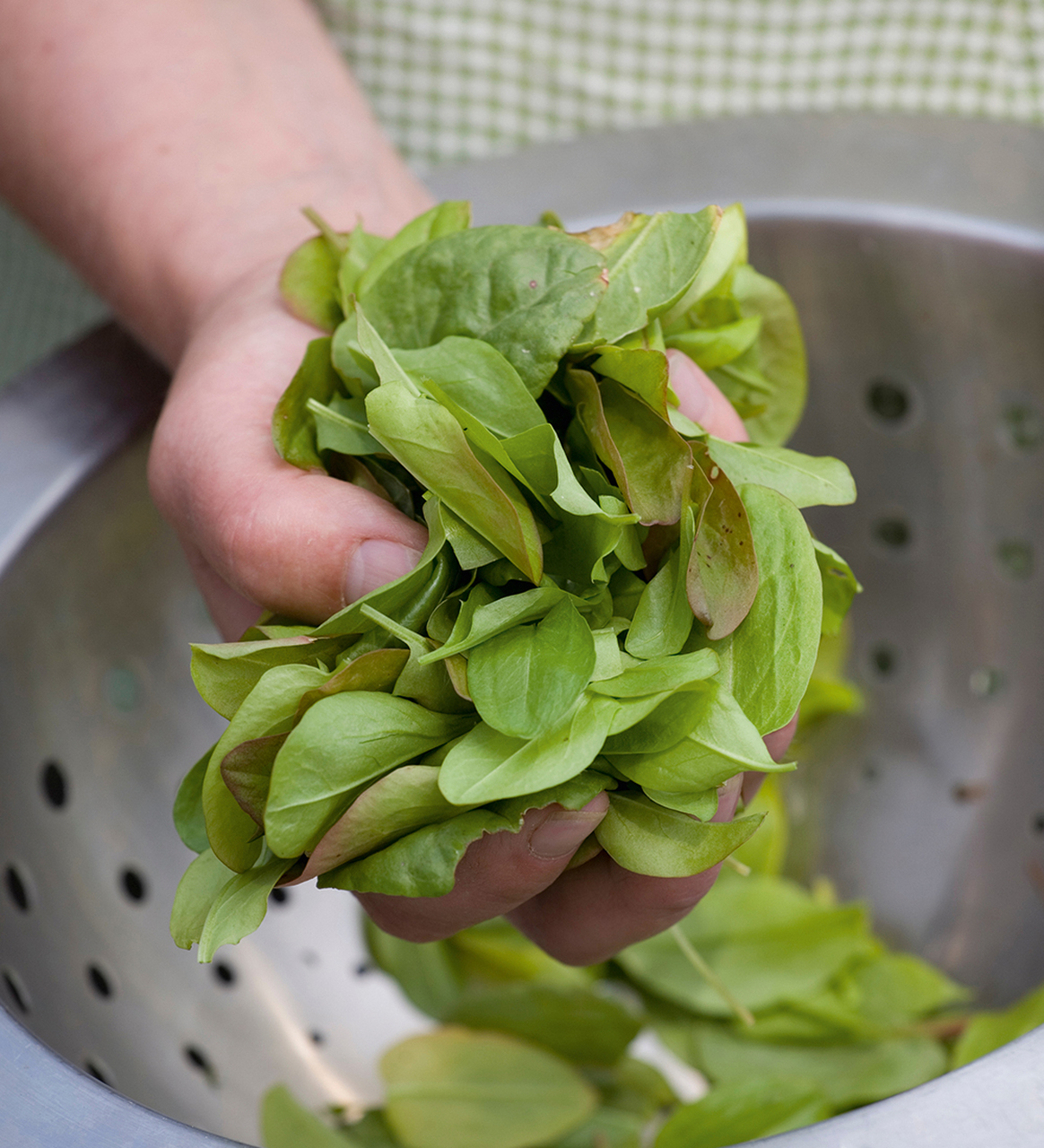trendy herbs how to: sorrel & lovage

Do you remember The River Cafe getting us all to start growing rocket about 20 years ago? Salad rocket was joined by the thin-fingered, peppery, wild variety. Then Jamie Oliver made Summer Savoury last year's caviar. Well, here are a couple of new and therefore even trendier herbs - really tasty things that are easy to grow in pots outside the back door.
Buckler leaf sorrel (Rumex scutatus) is my new favourite. This is not the commonly available form (Rumex acetosa), which is closely related to wild sorrel and has long, thin, mini dock-shaped leaves, but a much smaller, more compact plant, with leaves shaped like a shield. In her New Book of Herbs Jekka McVicar tells us that sorrel takes its name from the old French word surelle, meaning sour, but the flavour of this variety is less so and it has a softer texture.
Buckler leaf sorrel is wonderful mixed in a salad with hot peppery watercress and thin slices of orange to accompany red meat and makes the best possible fish sauce. A friend cooked me the Jane Grigson recipe for sorrel sauce with some turbot the other day (the recipe was originally Elizabeth David's) and it was one of the simplest and most delicious things I've eaten this year.
Strip the green from the stems and wilt the sorrel for a couple of minutes in a knob or tablespoon of butter. Then add large amounts of single (4 fl oz) and double cream (4 fl oz), lots of freshly ground black pepper and, before you pour it on to the plates, add a slurp of the fish juices into the creamy pan.
Sorrel is easy to grow. It's a hardy herbaceous perennial that germinates quickly from seed and will appear in five to 10 days under cover, or in two to three weeks if sown straight into the ground. It's best planted in partial shade in a soil rich with organic material. Sorrel can survive in alkaline soils but prefers acid - if it's in a pot, plant it in an ericaceous compost. In hot dry conditions it runs to flower and the leaves lose their softness and intensity of taste, so keep it well watered. If your sorrel does bolt, cut it down to within an inch of the ground. When you harvest, too, shear a plant off, picking all the leaves in one go.
There is one word of warning about this tasty herb. It self-sows freely so cut it back before the ripe seed stage, or plant it where you're happy for it to run riot.
Lovage is another of-the-moment herb. The youngest leaves, torn into thin strips - and they need to be tiny, as the strong flavour can drown everything else out - and added to a salad make an exciting contrast to lettuce. Don't be tempted by the old leaves - they are too tough and bitter.
I also use lovage when marinating a fillet of pork. The sharp flavour cuts through the sweetness of the meat perfectly. And it's the crucial ingredient of Hungarian goulash - the lovely thick, paprikary pork casserole that is about due for a renaissance.
Lovage looks great. Like angelica you can plant this 6ft giant as a sculptural addition to a herb or vegetable plot. But it is impressive and statuesque enough to take its place among shrubs and perennials too. This is another hardy herbaceous perennial that can be sown straight into the ground in the next few weeks, or under cover in spring or late summer. Germination under cover usually takes just over a week. Expect it to take twice as long outside.
To keep the leaves young and tender pick them regularly. If you can't keep up with the rapid growth of this large plant, cut it back two or three times during one growing season. Mint, sage, thyme, tarragon and sorrel also benefit from a regular clipping. Go and look in the garden now and cut back any of these plants that are shooting skywards. After that, a short back and sides once a month during the summer will give you herbs in peak condition well into late autumn.



